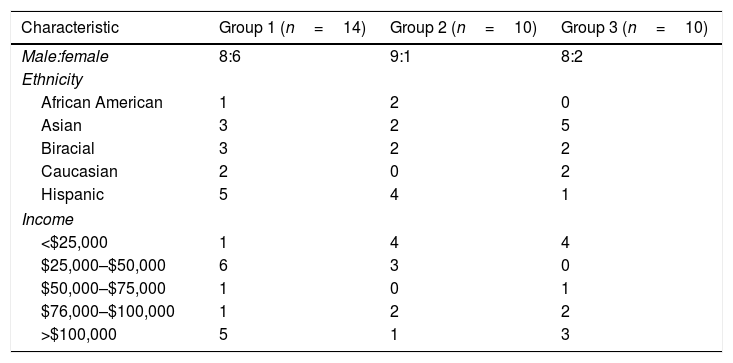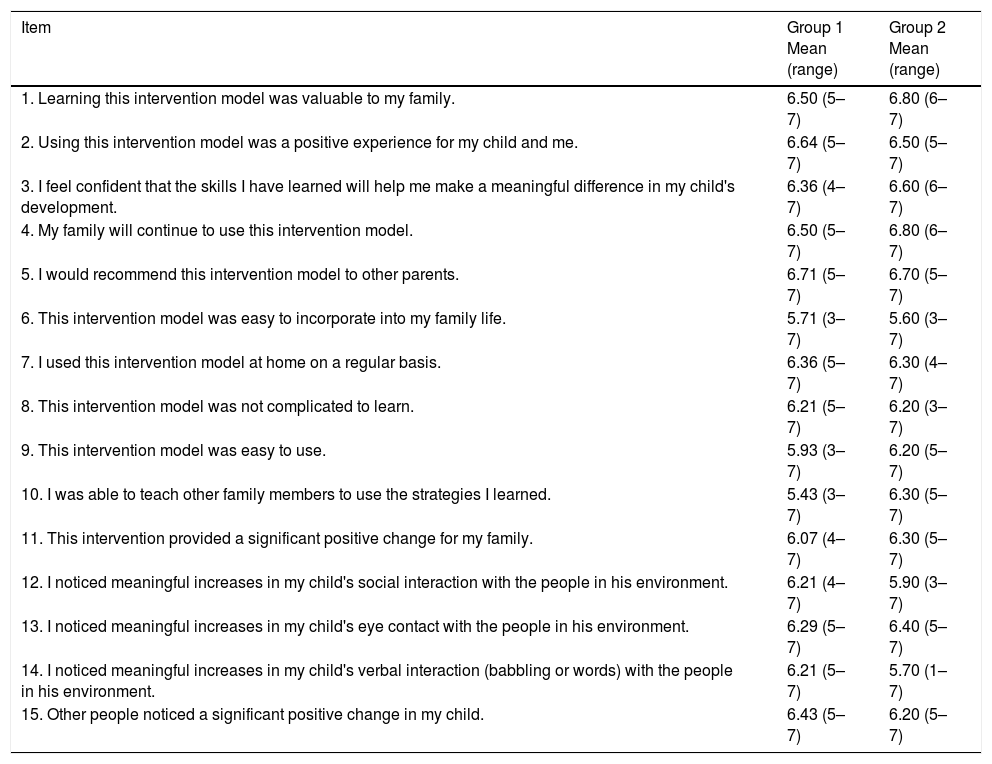Data from a 12-week randomized control trial of the Pathways Early Autism Intervention were analyzed. Pathways provides coaching to parents to facilitate early development of pragmatic skills for shared emotions with their toddlers. Thirty-four culturally and socioeconomically diverse toddlers with suspected or confirmed ASD were randomized into one of three groups: Pathways with an innovative protocol (IP) to facilitate social eye gaze, a similar intervention without the IP, and a business-as-usual group. Pre- and post-analyses of caregiver–child interactions and the Vineland Social subscale were used. A two-way mixed ANOVA tested response to treatment for the dependent variables. There was a significant group-by-time interaction for the sharing emotions measures of social eye gaze, F(2, 31)=7.34, p=.002, partial η2=.321, vocal-verbal reciprocity, F(2, 31)=3.753, p=.035, partial η2=.195; Vineland social, F(2, 31)=3.48, p=.043, partial η2=.183. Social eye gaze and Vineland scores favored the Pathways group, and vocal-verbal reciprocity favored Pathways and the intervention without the IP. There was a significant main effect of post-intervention Vineland social on pragmatic diversity, F(1, 30)=5.84, p=.022, partial η2=.163, and on rate of communication, F(1, 30)=5.63, p=.024, partial η2=.158. The Pathways group, with its protocol for social eye gaze, was more effective at facilitating the shared emotion skills than the other two groups, suggesting that eye gaze may be a pivotal skill for the development of early pragmatic skills in children with ASD.
Se analizaron los datos de un ensayo de control de distribución aleatoria de 12 semanas de la intervención temprana de autismo Pathways. Pathways ofrece formación a los padres para facilitar el desarrollo precoz de habilidades pragmáticas para compartir emociones con sus hijos pequeños. Treinta y cuatro niños con diversidad cultural y socioeconómica con sospecha de TEA o TEA confirmado se distribuyeron aleatoriamente en uno de los 3 grupos: Pathways con un protocolo innovador para facilitar la mirada social, una intervención similar sin el protocolo innovador y un grupo sin cambios. Se utilizaron análisis previos y posteriores de las interacciones cuidador-niño y la subescala social de Vineland. Un test de ANOVA mixto de 2 vías evaluó la respuesta al tratamiento de las variables dependientes. Hubo una importante interacción entre grupo y tiempo para medir las emociones compartidas de la mirada social, F(2, 31)=7.34, p=002, parcial η2=.321, la reciprocidad vocal-verbal, F(2, 31)=3.753, p=.035, parcial η2=.195, y la subescala social de Vineland, F(2, 31)=3.48, p=.043, parcial η2=.183. La mirada social y las puntuaciones de Vineland favorecieron al grupo Pathways, y la reciprocidad vocal-verbal favoreció a Pathways y a la intervención sin protocolo innovador. Hubo un efecto principal importante de la subescala social de Vineland después de la intervención sobre la diversidad pragmática, F(1, 30)=5.84, p=.022, parcial η2=.163, y sobre la tasa de comunicación, F(1, 30)=5.63, p=.024, parcial η2=.158. El grupo Pathways, con su protocolo para la mirada social, fue más eficaz en facilitar las habilidades para compartir emociones que los otros 2 grupos, lo que evidencia que la mirada puede ser una habilidad fundamental para el desarrollo de habilidades pragmáticas precoces en niños con TEA.
Artículo
Comprando el artículo el PDF del mismo podrá ser descargado
Precio 19,34 €
Comprar ahora












